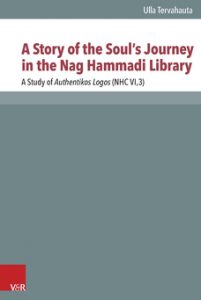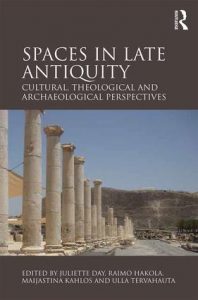Registration for the symposium starts!
Tvärminne, Finland
11–12 November, 2016
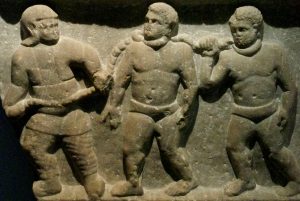 The theme of this year’s symposium is Slavery in Late Antiquity. Research on slavery in the late Roman Empire and in the post-Roman kingdoms has been expanding and evolving in the recent decades. The theme will be approached from a wide perspective, including social, economic, political, legal, ideological and religious levels.
The theme of this year’s symposium is Slavery in Late Antiquity. Research on slavery in the late Roman Empire and in the post-Roman kingdoms has been expanding and evolving in the recent decades. The theme will be approached from a wide perspective, including social, economic, political, legal, ideological and religious levels.
The keynote speakers of the symposium are: Chris De Wet (New Testament and Early Christian Studies, University of South Africa), Marianne Bjelland Kartzow (New Testament Studies at the University of Oslo) and Marja Vierros (Classics, University of Helsinki). Please refer to the programme below.
The symposium is free, but the number of participants we can take is limited. It will be organized at the Tvärminne Zoological Station on the southern coast of Finland. We offer transportation from Helsinki to Tvärminne and the return journey, as well as accommodation (one night) and meals in Tvärminne. However, we are not able to cover any travel costs to or accommodation in Helsinki.
Registration for the symposium starts on 1 October and closes on 26 October 2016. In order to register as a participant for the seminar, please send an email to Ville Vuolanto ville.vuolanto(at)uta.fi. Upon applying for participation, you are kindly asked to provide your contact information as well as to inform us about special diets etc. Please also mention if you do NOT need the coach transportation from Helsinki.
The symposium is organised by Maijastina Kahlos, University of Helsinki, Ulla Tervahauta, University of Helsinki and Ville Vuolanto, University of Tampere / University of Oslo.
The Symposium is funded by the Centre of Excellence “Reason and Religious Recognition”, Faculty of Theology; Jaakko Frösen Fund; and Department of World Cultures, Faculty of Humanities, University of Helsinki.
SLAVERY IN LATE ANTIQUITY
XXIV Finnish Symposium on Late Antiquity
Tvärminne, 11–12 November 2016
Friday 11 November
9.00 Departure by coach from Helsinki
c. 11 Arrival and accommodation
11.30 Opening of the Symposium
11.45 Lunch
12.30 Friday session I: Rethinking slavery in Late Antiquity
Chris De Wet: The Captive Monk: Late Antique Slavery and Syrian Ascetical Theology and Practice
Kate Cooper: Slavery and social exclusion: Christian advice to late Roman landowners
Arkadii Avdokhin: (Il)legal Freedom? Christ and Redemption from Slavery to Satan in Late Antique Liturgical Texts
14.15 Coffee
14.35 Friday session II: Early Christian discourses
Marianne Bjelland Kartzow: The Paradox of Slavery in Early Christian Discourse: An Intersectional Approach
P.J.J. Botha: Marking bodies: ritual and discipline in early Christian discourse
16:00 Friday session III: Coloni
Uiran Gebara da Silva: Rural Slavery in Late Roman Gaul
Florian Battistella and David Pitz: Colonos, qui fugam meditantur, in servilem condicionem ferro ligari conveniet (Cod. Theod. 5,17,1). Some Observations about the Relationship between Slavery and the Colonate in Late Antiquity
17.00 Sauna/Men
18.30 Sauna/Women
20.00 Dinner
Saturday 12 November:
8.00-9.00 Breakfast
9.00 Saturday session I: Slavery in the Margins
Marja Vierros: Slaves in the Sixth Century Palestine in the Light of Papyrological Evidence
Judith Evans Grubbs: From Slave to Saint: the enslavement of St Patrick
Ilkka Lindstedt: Slavery in the early Islamic period in the light of epigraphy
11.45 Lunch
12.00 Saturday session II: Living as a slave
Elizabeth Fentress: The Material Culture of Slave quarters in Roman Italy
Mariana Bodnaruk: Inscribing Inequality: Late Antique Slavery in Epigraphic Evidence
Ilaria Grossi: Tene me ne fugiam et revoca me ad dominum! The relationships between slaves and owners through late antique collaria
14.00 Conclusion of the symposium and coffee
15.00 Departure
c. 17 Arrival in Helsinki


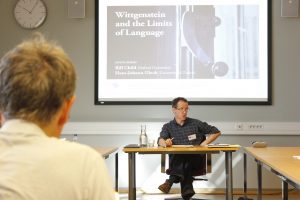
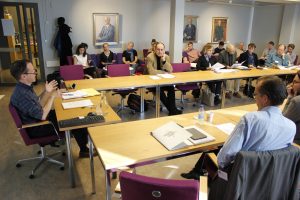
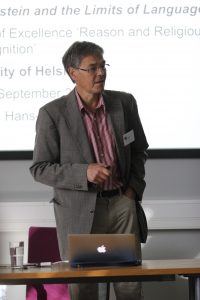
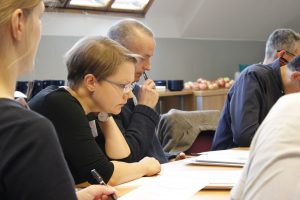
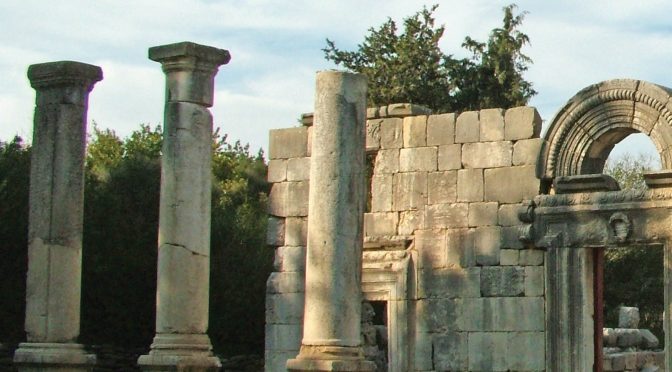 Conference program: “The Synagogue in Ancient Palestine” (Helsinki, Sept 21-24, 2016)
Conference program: “The Synagogue in Ancient Palestine” (Helsinki, Sept 21-24, 2016)
